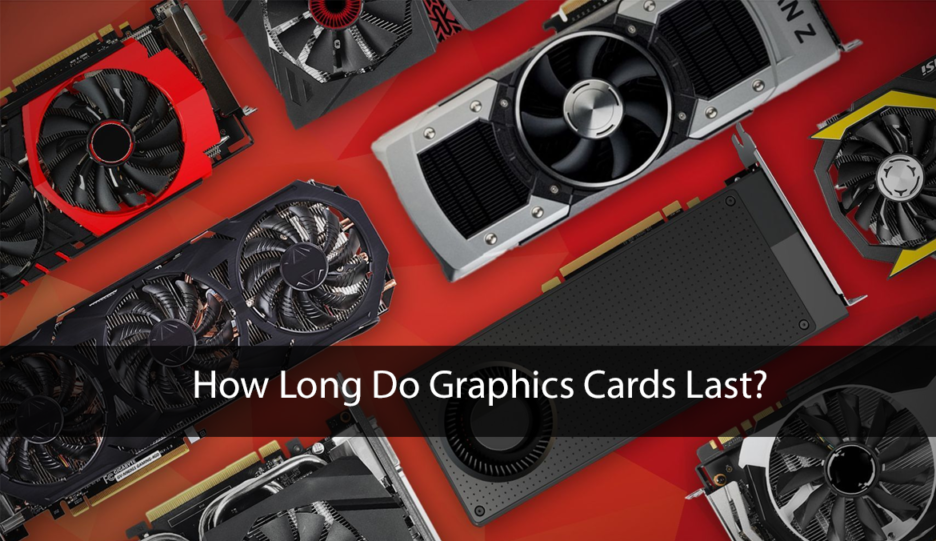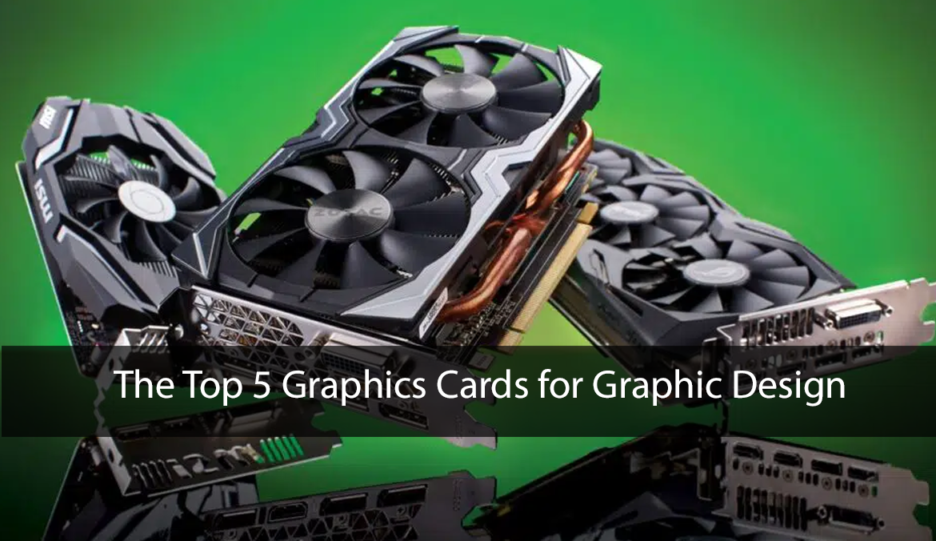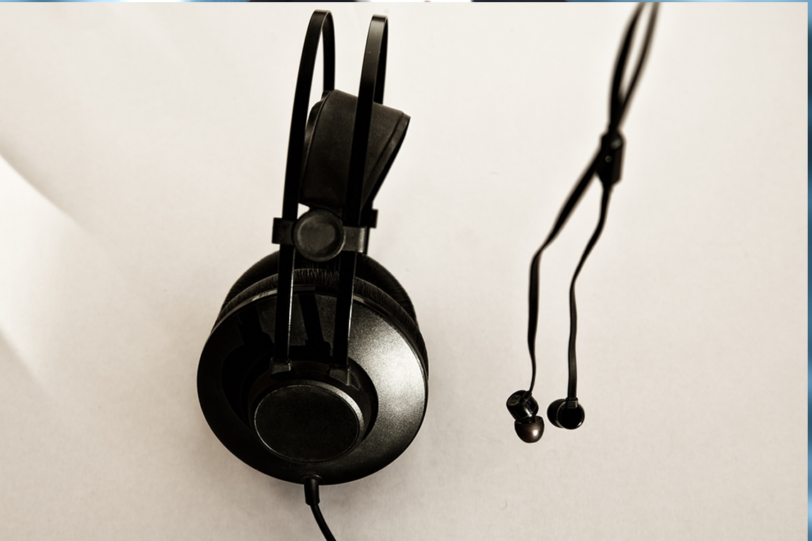Welcome to the ever-evolving world of fishing rods. As we dive into the year 2024, advancements in technology and materials have transformed the landscape of fishing gear. Whether you’re an experienced angler or just dipping your toes into the sport, finding the perfect rod can make all the difference in your fishing experience. Join us as we explore the top contenders for the title of the “Best Fishing Rods of 2024” and uncover the innovations driving this year’s top picks.
Understanding Key Features of Best Fishing Rods to Look for in 2024
In the pursuit of the best fishing rod for your needs in 2024, it’s crucial to understand the key features that contribute to performance, durability, and overall fishing experience. Let’s delve into these features:
Material Innovation:
In recent years, material innovation has been at the forefront of fishing rod design. Advanced materials such as carbon fiber, graphene, and composite blends have revolutionized rod construction, offering enhanced strength, sensitivity, and flexibility. Look for rods crafted from these cutting-edge materials for optimal performance on the water.
Weight and Balance:
Weight and balance play a significant role in the handling and maneuverability of a fishing rod. In 2024, manufacturers are focusing on achieving the perfect balance between lightweight design and optimal weight distribution. A well-balanced rod reduces fatigue during extended fishing sessions and improves casting accuracy.
Rod Length and Action:
The length and action of a fishing rod are key factors in determining its versatility and performance in different fishing scenarios. Longer rods provide increased casting distance and leverage, making them ideal for open water fishing, while shorter rods offer precision and control in tight spaces. Action refers to the flexibility or stiffness of the rod, influencing its sensitivity and hook-setting power. Understanding the optimal length and action for your target species and fishing environment is essential when selecting a rod.
Handle Design:
The handle of a fishing rod is your direct connection to the fish, affecting comfort, grip, and sensitivity. In 2024, handle designs are evolving to enhance ergonomics and tactile feedback. Look for features such as contoured grips, textured materials, and customizable options to ensure a comfortable and secure hold, even in wet conditions.
By prioritizing these key features in your search for the best fishing rod of 2024, you can make an informed decision that aligns with your fishing style, preferences, and budget. Stay tuned as we explore the top fishing rods that excel in these areas and deliver unmatched performance on the water.
Top Fishing Rods for Different Environments
When it comes to fishing, each environment presents its own unique challenges and opportunities. Whether you’re casting lines in freshwater lakes, rivers, or saltwater oceans, having the right rod can significantly impact your success. Let’s explore the top fishing rods tailored for different environments:
Freshwater Fishing Rods:
Freshwater anglers have a diverse range of fishing opportunities, from targeting bass in shallow ponds to chasing trout in fast-flowing streams. In 2024, top freshwater fishing rods are designed with precision and versatility in mind. Look for rods with medium to medium-heavy power ratings, coupled with fast or moderate-fast action for a balance of sensitivity and power. Multi-piece rods are also popular for their portability and ease of transportation to remote fishing spots.
Saltwater Fishing Rods:
Saltwater fishing presents its own set of challenges, including harsh environmental conditions and hard-fighting fish species. In 2024, saltwater fishing rods are engineered to withstand the rigors of saltwater angling while delivering superior performance and durability. Look for rods constructed from corrosion-resistant materials such as graphite or fiberglass, with heavy-duty components and reinforced guides to handle large saltwater game fish. Longer rods with fast or extra-fast action are favored for their casting distance and hook-setting power, essential when targeting fast-moving pelagic species.
By choosing fishing rods optimized for specific environments, anglers can maximize their chances of success and enjoy a rewarding fishing experience. Stay tuned as we highlight the top fishing rods tailored for specific fish species, helping you reel in the catch of a lifetime.
Best Fishing Rods for Specific Fish Species
In the world of fishing, different fish species require specialized gear to optimize your chances of success. Whether you’re targeting bass in freshwater lakes or casting lines for salmon in the open ocean, having the right rod can make all the difference. Let’s explore the best fishing rods tailored for specific fish species:
Bass Fishing Rods:
Bass fishing enthusiasts demand precision and power from their fishing rods to tackle the aggressive behavior of this popular game fish. In 2024, top bass fishing rods are designed with sensitivity and responsiveness in mind. Look for rods with medium to medium-heavy power ratings, paired with fast or extra-fast action for quick hook sets and optimal lure control. Versatile lengths between 6 to 7 feet provide the ideal balance between casting distance and maneuverability, whether you’re fishing from shore or in a boat.
Trout Fishing Rods:
Trout fishing requires finesse and delicacy to entice wary trout in clear mountain streams and rivers. In 2024, top trout fishing rods prioritize sensitivity and presentation, allowing anglers to detect subtle strikes and deliver precise casts. Look for ultra-light to light power rods with moderate to fast action, designed to cast lightweight lures and delicately present bait to finicky trout. Shorter lengths between 6 to 7 feet provide the necessary accuracy and control for targeting trout in tight spaces with overhanging vegetation.
Salmon Fishing Rods:
Salmon fishing presents a formidable challenge, requiring robust gear to handle powerful runs and acrobatic leaps. In 2024, top salmon fishing rods are engineered for strength and durability, capable of battling large salmon in both freshwater rivers and saltwater environments. Look for medium to heavy power rods with fast action, equipped with sturdy reel seats and oversized guides to accommodate heavy lines and large salmon lures. Longer lengths between 8 to 10 feet provide the leverage and casting distance necessary for effectively targeting salmon in a variety of fishing scenarios.
Inshore and Offshore Rods:
Inshore and offshore anglers target a wide range of saltwater species, from snook and redfish in shallow coastal waters to tuna and marlin in deep offshore seas. In 2024, top inshore and offshore fishing rods are designed to handle the diverse challenges of saltwater angling while providing exceptional performance and durability. Look for rods constructed from corrosion-resistant materials such as graphite or carbon fiber, with heavy-duty components and robust reel seats designed to withstand the harsh marine environment. Versatile medium to heavy power rods with fast action are preferred for their ability to handle a variety of saltwater species and fishing techniques, from casting lures to trolling baits.
By selecting fishing rods tailored to specific fish species, anglers can optimize their gear for maximum effectiveness and enjoyment on the water. Stay tuned as we explore additional factors to consider when choosing the best fishing rod of 2024.
Budget-Friendly Options without Compromising Quality
Fishing enthusiasts understand that investing in high-quality gear can enhance their overall experience on the water. However, quality doesn’t always have to come with a hefty price tag. In 2024, there are several budget-friendly fishing rod options available that offer excellent performance without compromising on quality. Let’s explore some of these options:
Entry-Level Rods from Reputable Brands:
Many well-known fishing gear manufacturers offer entry-level rod series designed specifically for beginners or anglers on a budget. These rods often feature durable construction, decent sensitivity, and reliable performance at an affordable price point. While they may lack some of the advanced features found in higher-end models, they provide an excellent starting point for novice anglers looking to get into the sport without breaking the bank.
Value-Priced Rod-and-Reel Combos:
Another cost-effective option for budget-conscious anglers is to purchase rod-and-reel combos. These pre-matched sets typically include a fishing rod paired with a compatible reel, offering convenience and savings compared to purchasing each component separately. While some combo packages may skimp on quality to keep costs down, there are plenty of options available that strike a balance between affordability and performance. Look for combos from reputable brands that offer reliable gear suitable for your target species and fishing style.
Economical Rods with Limited Warranty Coverage:
Some fishing rod manufacturers offer budget-friendly models with limited warranty coverage, allowing them to pass on cost savings to consumers. While these rods may not come with the same level of warranty protection as their higher-priced counterparts, they still offer decent quality and performance for the price. Keep in mind that opting for a rod with limited warranty coverage may require anglers to take extra precautions to avoid damage or premature wear and tear.
Consider Used or Pre-Owned Rods:
For anglers looking to stretch their budget even further, exploring the used or pre-owned market can yield great deals on quality fishing rods. Many fishing enthusiasts upgrade their gear regularly, leading to a robust market for second-hand fishing rods in good condition. Before making a purchase, inspect the rod carefully for any signs of damage or excessive wear, and test its performance if possible. While buying used gear may require a bit more effort than purchasing new, it can be a cost-effective way to acquire high-quality rods at a fraction of the retail price.
In conclusion, budget-friendly fishing rod options abound in 2024, allowing anglers of all skill levels to enjoy the thrill of fishing without breaking the bank. Whether you’re just starting out or looking to expand your gear collection on a budget, there are plenty of affordable options available that offer excellent quality and performance on the water.
Cutting-Edge Technology and Advancements in Rod Design
In the fast-paced world of fishing gear, technology continues to drive innovation and push the boundaries of rod design. As we step into 2024, anglers are met with a wave of cutting-edge advancements aimed at enhancing performance, sensitivity, and overall fishing experience. Let’s explore the latest technological breakthroughs shaping the fishing rods of today and tomorrow:
Nanotechnology in Rod Construction:
One of the most significant advancements in rod design is the integration of nanotechnology into rod construction. By incorporating nano-sized particles into rod blanks, manufacturers are able to enhance strength, sensitivity, and responsiveness like never before. Nanotech rods offer unparalleled sensitivity, allowing anglers to detect even the most subtle bites and movements underwater. Additionally, nano-enhanced materials contribute to lighter, more durable rods, providing anglers with increased casting accuracy and fatigue resistance.
Advanced Sensing and Feedback Systems:
Another area of innovation in rod design is the integration of advanced sensing and feedback systems. Smart rods equipped with sensors and onboard electronics provide real-time data on rod performance, including casting distance, hook-set force, and fish detection. Anglers can use this information to fine-tune their technique, adjust rod settings, and optimize their fishing strategy for maximum effectiveness. Some smart rods even feature haptic feedback technology, delivering tactile alerts to alert anglers of bites and strikes without taking their eyes off the water.
Integrated Fishing Apps and Connectivity:
In 2024, fishing rods are becoming increasingly interconnected with the digital world through integrated fishing apps and connectivity features. Smart rods equipped with Bluetooth or Wi-Fi capabilities allow anglers to sync their rod data with their smartphones or tablets, providing access to advanced analytics, weather forecasts, GPS mapping, and community-driven fishing reports. Anglers can leverage this information to make informed decisions on where, when, and how to fish, ultimately increasing their chances of success on the water.
Customizable Settings and Personalization:
Rod customization is another trend gaining traction in 2024, allowing anglers to tailor their rods to their specific preferences and fishing style. Many rod manufacturers offer customizable options such as interchangeable grips, adjustable reel seats, and modular rod sections, allowing anglers to create a personalized setup that suits their needs. Additionally, some rods feature programmable settings that can be adjusted on the fly to adapt to changing fishing conditions and target species.
As technology continues to evolve, fishing rods are evolving with it, offering anglers unprecedented levels of performance, versatility, and convenience. Stay tuned as we explore the top fishing rods of 2024 that leverage these cutting-edge advancements to deliver unparalleled performance on the water.
Sustainability and Eco-Friendly Rod Options
In the modern era of fishing, sustainability and environmental responsibility have become increasingly important considerations for anglers and manufacturers alike. As we move into 2024, there is a growing emphasis on eco-friendly fishing gear, including rods that are designed and manufactured with sustainability in mind. Let’s delve into the sustainable practices and eco-friendly options available in fishing rods:
Sustainable Material Choices:
One of the primary ways in which rod manufacturers are addressing sustainability is through the use of environmentally friendly materials. Instead of relying solely on traditional materials like fiberglass and carbon fiber, manufacturers are exploring alternative options such as bamboo, hemp, and recycled composites. These materials offer comparable performance to conventional options while reducing the environmental impact associated with rod production.
Eco-conscious Manufacturing Processes:
In addition to sustainable material choices, manufacturers are also adopting eco-conscious manufacturing processes to minimize waste and resource consumption. This includes reducing water and energy usage, optimizing production efficiency, and implementing recycling and waste management initiatives. By prioritizing sustainability throughout the manufacturing process, rod manufacturers can minimize their environmental footprint and contribute to the conservation of natural resources.
Certifications and Eco-labels:
To help consumers identify eco-friendly fishing rods, various certifications and eco-labels have emerged in the market. These certifications, such as the Forest Stewardship Council (FSC) certification and the Global Organic Textile Standard (GOTS), verify that the materials and manufacturing processes used in rod production meet specific environmental and social criteria. Anglers can look for these certifications when selecting a fishing rod to ensure they are making a sustainable choice.
Biodegradable and Recyclable Components:
Another approach to eco-friendly rod design is the incorporation of biodegradable and recyclable components. Manufacturers are developing rods with biodegradable grips, handles, and reel seats that break down naturally over time, reducing the environmental impact of discarded rods. Additionally, recycling programs are being established to collect and repurpose old fishing rods, preventing them from ending up in landfills and oceans.
By choosing sustainable and eco-friendly fishing rods, anglers can enjoy their favorite pastime with peace of mind, knowing they are making a positive contribution to the health of our planet. Stay tuned as we highlight the top sustainable fishing rods of 2024 that combine performance, durability, and environmental responsibility.
User Reviews and Recommendations
In the quest to find the best fishing rod of 2024, user reviews and recommendations play a crucial role in guiding anglers towards the right choice. Whether you’re a seasoned angler or a beginner, hearing from others who have used the rods firsthand can provide valuable insights and help inform your decision. Let’s explore the different sources of user reviews and recommendations and how they can assist you in selecting the perfect fishing rod:
Expert Reviews:
Expert reviews from fishing publications, online forums, and YouTube channels offer comprehensive insights into the performance, features, and durability of fishing rods. Professional anglers and gear testers rigorously evaluate rods in various fishing scenarios, providing detailed analysis and recommendations based on their experiences. These reviews often cover factors such as casting distance, sensitivity, handling, and overall value for money, helping anglers make informed decisions.
Customer Feedback and Ratings:
Customer reviews and ratings on retail websites and online marketplaces provide real-world perspectives from anglers who have purchased and used the rods. Reading through these reviews allows you to gauge the satisfaction level of other users, identify common strengths and weaknesses of the rods, and assess their suitability for your fishing needs. Look for patterns and trends in customer feedback to get a well-rounded understanding of each rod’s performance and reliability.
Social Media and Online Communities:
Social media platforms and online fishing communities serve as valuable hubs for anglers to share their experiences, discuss gear recommendations, and seek advice from fellow fishing enthusiasts. Joining Facebook groups, Reddit forums, and specialized fishing communities allows you to interact directly with other anglers, ask questions, and receive personalized recommendations based on your specific preferences and fishing goals.
In-person Demos and Testimonials:
If possible, attending fishing expos, trade shows, and demo events provides an opportunity to test out different rods firsthand and hear testimonials from manufacturers and pro staff. Seeing and feeling the rods in action allows you to assess their ergonomics, sensitivity, and overall performance in real-world fishing scenarios. Additionally, speaking directly with representatives and fellow anglers can provide valuable insights and recommendations based on their hands-on experience with the rods.
By leveraging user reviews and recommendations from a variety of sources, anglers can make informed decisions and choose the best fishing rod of 2024 that aligns with their preferences, budget, and fishing style. Stay tuned as we compile and analyze user feedback to identify the top-rated fishing rods of the year.
Maintenance and Care Tips to Extend Rod Lifespan
Proper maintenance and care are essential for extending the lifespan of your fishing rod and ensuring optimal performance on the water. In this section, we’ll explore some key maintenance tips to keep your rod in top condition:
Cleaning:
Regular cleaning is crucial for removing dirt, debris, and salt residue that can accumulate on your rod during fishing trips. After each outing, rinse your rod thoroughly with freshwater to remove any saltwater or contaminants. Use a soft cloth or sponge to gently wipe down the rod blank, guides, and reel seat. Avoid using harsh chemicals or abrasive cleaners, as they can damage the rod’s finish and components.
Storage:
Proper storage is essential for preventing damage to your fishing rod when not in use. Store your rod in a cool, dry place away from direct sunlight, extreme temperatures, and humidity. Avoid storing your rod in a bent or stressed position, as this can cause structural damage over time. Consider investing in rod racks, rod sleeves, or protective cases to keep your rods organized and protected from accidental damage.
Reel Maintenance:
In addition to caring for your rod, don’t forget to maintain your fishing reel as well. Regularly clean and lubricate the reel’s moving parts to ensure smooth operation and prevent corrosion. Check the drag system, bail mechanism, and bearings for any signs of wear or damage, and replace any worn or damaged components as needed. Proper reel maintenance will not only extend the lifespan of your reel but also contribute to smoother casting and retrieval.
Inspect for Damage:
Periodically inspect your fishing rod for any signs of damage or wear, such as cracked or chipped rod blanks, bent guides, or loose reel seats. Address any issues promptly to prevent further damage and maintain optimal performance. If you notice any significant damage or structural issues, consider consulting a professional rod repair service for evaluation and repairs.
Transportation:
When transporting your fishing rod, take care to protect it from damage during transit. Use rod sleeves, rod tubes, or protective cases to shield your rod from bumps, impacts, and other hazards. Secure your rods properly in your vehicle or boat to prevent them from shifting or falling during transport. Additionally, consider investing in travel-friendly rods that break down into multiple pieces for easier transportation and storage.
By following these maintenance and care tips, you can prolong the lifespan of your fishing rod, preserve its performance, and enjoy countless successful fishing trips for years to come. Stay tuned for more expert advice on optimizing your fishing gear and maximizing your time on the water.
Comparison of Leading Brands and Models
Choosing the best fishing rod of 2024 involves comparing and evaluating the offerings from various brands and models. In this section, we’ll conduct a comparative analysis of some of the leading fishing rod brands and models on the market:
Performance Analysis:
One of the primary factors to consider when comparing fishing rods is their performance characteristics. Evaluate factors such as casting distance, accuracy, sensitivity, and hook-setting power to determine how each rod performs in different fishing scenarios. Look for rods that strike a balance between these attributes to meet your specific fishing needs and preferences.
Durability and Longevity:
The durability and longevity of a fishing rod are critical considerations, especially for anglers who frequently fish in challenging environments or target hard-fighting fish species. Assess the materials, construction quality, and warranty coverage of each rod to gauge its durability and potential lifespan. Look for rods made from high-quality materials such as carbon fiber, fiberglass, or composite blends, with reinforced guides and components for added durability.
Price and Value:
While price shouldn’t be the sole determining factor, it’s essential to consider the overall value proposition of each fishing rod. Evaluate the features, performance, and durability offered by each rod relative to its price point to determine its value for money. Consider your budget and fishing priorities when weighing the cost-benefit ratio of each rod and choose one that offers the best balance of performance and affordability.
Brand Reputation and Customer Service:
The reputation of the brand and the quality of its customer service can also influence your decision when selecting a fishing rod. Research the track record of each brand in terms of product quality, innovation, and customer satisfaction. Look for brands with a proven history of excellence and reliable customer support to ensure peace of mind with your purchase.
User Feedback and Reviews:
Lastly, consider user feedback and reviews from fellow anglers who have used the rods in real-world fishing scenarios. Pay attention to common themes, strengths, and weaknesses mentioned in user reviews to gain valuable insights into each rod’s performance and reliability. Look for patterns and trends in user feedback to identify any potential issues or areas where a particular rod excels.
By conducting a comprehensive comparison of leading fishing rod brands and models based on performance, durability, value, brand reputation, and user feedback, you can make an informed decision and choose the best fishing rod of 2024 that meets your needs and exceeds your expectations. Stay tuned as we highlight some of the top-rated fishing rods of the year and provide recommendations based on our comparative analysis.
Rod Customization Options for Personalized Fishing Experience
In the world of fishing, customization allows anglers to tailor their gear to their specific preferences, fishing style, and target species. In this section, we’ll explore the various customization options available for fishing rods, empowering anglers to create a personalized fishing experience:
Custom Rod Builders:
One of the most popular ways to customize a fishing rod is through custom rod builders. These skilled craftsmen specialize in creating bespoke fishing rods tailored to each angler’s unique specifications. From selecting the rod blank and components to customizing the handle design, grip material, and reel seat, anglers have full control over every aspect of their custom rod. Working with a custom rod builder allows anglers to create a one-of-a-kind fishing rod that perfectly suits their needs and preferences.
DIY Customization Tips:
For anglers who enjoy a hands-on approach, do-it-yourself (DIY) customization offers endless possibilities for personalizing fishing rods. Simple DIY modifications such as adding custom wraps, decorative threadwork, or personalized decals can enhance the appearance of a rod and give it a unique flair. More advanced DIY projects may involve replacing rod guides, upgrading reel seats, or modifying handle grips to improve performance and ergonomics. With a bit of creativity and craftsmanship, anglers can transform their off-the-shelf rods into customized works of art that reflect their individual style and personality.
Aftermarket Accessories and Upgrades:
Another way to customize fishing rods is by adding aftermarket accessories and upgrades. From rod sleeves and protective cases to rod holders and line guides, a wide range of accessories are available to enhance the functionality and versatility of fishing rods. Anglers can also upgrade rod components such as guides, reel seats, and handles with higher-quality aftermarket options to improve performance and durability. By investing in the right accessories and upgrades, anglers can optimize their fishing gear for maximum effectiveness and enjoyment on the water.
Tailoring Rod Setup to Fishing Conditions:
Customization isn’t just about aesthetics—it’s also about optimizing rod setup to suit specific fishing conditions and target species. Anglers can adjust rod length, action, and power to match the fishing environment, whether it’s casting lightweight lures in shallow waters or battling trophy-sized fish in deep offshore reefs. By tailoring rod setup to fishing conditions, anglers can maximize their chances of success and adapt to changing circumstances on the water.
Personalized Rod Identification:
Lastly, customization allows anglers to personalize their rods for easy identification and recognition on the water. Adding custom rod labels, tags, or engravings with your name, contact information, or unique identifiers can help distinguish your rods from others and prevent confusion or mix-ups during group fishing outings or tournaments.
By exploring the various customization options available for fishing rods, anglers can create a personalized fishing experience that reflects their individual preferences, style, and personality. Whether working with a custom rod builder, embarking on a DIY project, or adding aftermarket accessories, customization empowers anglers to elevate their fishing game and make their mark on the water.
Addressing Common Fishing Rod Myths and Misconceptions
In the world of fishing, myths and misconceptions abound, often leading anglers astray and affecting their gear choices. In this section, we’ll debunk some common fishing rod myths and misconceptions to help anglers make informed decisions:
Myth: More Guides Mean Better Performance:
One common misconception is that fishing rods with more guides perform better than those with fewer guides. While guides play a crucial role in distributing line tension and minimizing friction during casting and retrieval, the number of guides alone does not determine a rod’s performance. The placement, size, and quality of guides, as well as the rod blank material and construction, are more critical factors to consider when assessing a rod’s performance.
Myth: High Price Equals High Performance:
Another prevalent myth is that expensive fishing rods always outperform more affordable options. While high-end rods often feature premium materials, advanced technologies, and superior craftsmanship, they may not necessarily offer a significant performance advantage over mid-range or budget-friendly rods. Factors such as rod action, power, and suitability for specific fishing techniques and environments are more important considerations than price alone.
Myth: Rod Power Equals Rod Strength:
Many anglers mistakenly believe that rod power is synonymous with rod strength. In reality, rod power refers to the amount of force required to bend the rod, while rod strength relates to its ability to withstand pressure and handle heavy loads. A rod may have a heavy power rating but lack the durability and backbone needed to handle large fish or heavy lures effectively. It’s essential to consider both power and strength when selecting a rod for your fishing needs.
Myth: Short Rods Are Easier to Cast:
Contrary to popular belief, shorter fishing rods are not necessarily easier to cast than longer rods. While shorter rods may offer greater maneuverability and control in tight spaces or dense cover, they typically sacrifice casting distance and leverage compared to longer rods. The ideal rod length depends on factors such as fishing environment, target species, and personal preference, rather than a one-size-fits-all approach.
Myth: Rods Have a Specific Lifespan:
Some anglers believe that fishing rods have a predetermined lifespan and need to be replaced regularly. While rods may experience wear and tear over time, their lifespan largely depends on how well they are maintained and cared for. With proper maintenance, storage, and handling, fishing rods can last for many years, providing reliable performance and enjoyment for countless fishing adventures.
By dispelling these common fishing rod myths and misconceptions, anglers can make more informed decisions when selecting and using fishing rods. By focusing on the factors that truly matter—such as rod performance, suitability for specific fishing techniques, and proper maintenance—anglers can maximize their success and enjoyment on the water.
Legal and Regulatory Considerations for Fishing Equipment
Fishing regulations vary by region and can have implications for the type of equipment anglers are permitted to use. In this section, we’ll explore the legal and regulatory considerations that anglers should be aware of when selecting fishing rods:
Compliance with Fishing Regulations:
Before purchasing a fishing rod, it’s essential to familiarize yourself with local fishing regulations and guidelines set forth by regulatory authorities such as state fish and wildlife agencies or national fisheries management organizations. These regulations may specify restrictions on certain types of fishing gear, including rod length, hook size, and lure types, to protect fish populations and promote sustainable fishing practices.
Species-specific Restrictions:
Certain fishing regulations may impose restrictions on specific fish species or habitats to conserve vulnerable populations or protect critical ecosystems. For example, regulations may prohibit the use of certain types of fishing gear, such as barbed hooks or treble hooks, in designated catch-and-release areas to minimize harm to fish populations. Anglers should be mindful of these species-specific restrictions when selecting fishing rods and gear to ensure compliance with conservation measures.
Gear Restrictions in Protected Areas:
In protected areas such as marine reserves, national parks, or wildlife refuges, additional restrictions may apply to fishing gear to minimize human impact on sensitive habitats and wildlife populations. These restrictions may include bans on certain types of fishing gear, such as lead sinkers or gill nets, to prevent habitat degradation and preserve biodiversity. Anglers should research and adhere to any gear restrictions imposed in protected areas to minimize their ecological footprint and respect conservation efforts.
Ethical Considerations:
In addition to legal regulations, anglers should also consider ethical considerations when selecting fishing rods and gear. Choosing gear that minimizes harm to fish and aquatic habitats, such as barbless hooks or non-lead sinkers, can align with ethical angling practices and demonstrate a commitment to responsible fishing stewardship. Anglers should prioritize conservation-minded gear choices and strive to minimize their environmental impact while enjoying their favorite pastime.
Staying Informed and Adapting to Change:
Fishing regulations are subject to change over time in response to evolving conservation needs and scientific understanding of fish populations and ecosystems. Anglers should stay informed about updates to fishing regulations and be prepared to adapt their gear choices accordingly. This may involve regularly checking for regulatory updates from relevant authorities, consulting local fishing guides or resources, and seeking guidance from experienced anglers or fishing organizations.
By considering the legal and regulatory considerations outlined in this section, anglers can make informed decisions when selecting fishing rods and gear and ensure compliance with applicable regulations. By adhering to conservation-minded practices and staying informed about changes to fishing regulations, anglers can contribute to the long-term sustainability of fisheries and preserve natural resources for future generations to enjoy.
Future Trends and Predictions in Fishing Rod Technology
As technology continues to advance at a rapid pace, the future of fishing rod technology holds exciting possibilities. In this section, we’ll explore some of the emerging trends and predictions that may shape the evolution of fishing rods in the years to come:
Integration of Artificial Intelligence (AI) and Machine Learning:
One of the most significant trends in fishing rod technology is the integration of artificial intelligence (AI) and machine learning algorithms. Smart rods equipped with AI-powered sensors and analytics software can analyze data in real-time, providing anglers with actionable insights into fish behavior, habitat conditions, and optimal fishing techniques. AI-driven rods may also incorporate predictive modeling to anticipate fish movements and improve catch rates.
Advanced Materials and Composite Blends:
The development of advanced materials and composite blends continues to push the boundaries of rod performance and durability. Innovations such as carbon nanotubes, grapheme, and bio-based polymers offer unparalleled strength, sensitivity, and lightweight properties, allowing manufacturers to create rods with superior performance characteristics. Future rods may utilize these advanced materials to achieve new levels of sensitivity, responsiveness, and power while reducing weight and fatigue.
Integration of Wearable Technology:
Wearable technology is poised to revolutionize the fishing experience by providing anglers with real-time feedback and assistance directly on their person. Smart fishing apparel, such as shirts, hats, or gloves embedded with sensors and connectivity features, can monitor vital metrics such as body movement, temperature, and heart rate to optimize casting technique and fishing efficiency. Additionally, wearable devices may provide haptic feedback or audio cues to alert anglers of fish activity or changes in fishing conditions.
Enhanced Connectivity and Digital Integration:
Future fishing rods are likely to be more interconnected with digital devices and online platforms, enabling seamless integration with smartphones, tablets, and other digital tools. Smart rods equipped with Bluetooth or Wi-Fi connectivity can sync data with fishing apps, GPS navigation systems, and social media platforms, providing anglers with real-time updates on weather conditions, fishing hotspots, and community-driven fishing reports. Digital integration may also facilitate remote rod customization and software updates to enhance rod performance and functionality.
Environmental Sustainability and Eco-Friendly Design:
As environmental awareness grows, fishing rod manufacturers are increasingly focusing on sustainability and eco-friendly design principles. Future rods may incorporate sustainable materials, recyclable components, and eco-conscious manufacturing processes to minimize their environmental footprint and promote conservation efforts. Additionally, rods may feature built-in sensors or monitoring systems to track environmental parameters such as water quality, temperature, and habitat health, empowering anglers to contribute to environmental research and stewardship.
By embracing these emerging trends and predictions in fishing rod technology, anglers can look forward to a future filled with innovative gear that enhances their fishing experience while promoting sustainability and conservation. As technology continues to evolve, fishing rods will continue to evolve with it, offering anglers new opportunities to connect with nature and enjoy the thrill of the catch.
Conclusion: Choosing the Right Fishing Rod for Your Needs
In the world of fishing, the right rod can make all the difference between a successful day on the water and coming home empty-handed. As we conclude our exploration of the best fishing rods of 2024, it’s essential to reflect on the key factors that anglers should consider when selecting the perfect rod for their needs:
Understanding Your Fishing Style and Preferences:
Before embarking on your search for the ideal fishing rod, take the time to reflect on your fishing style, preferences, and goals. Consider the type of fish you’ll be targeting, the fishing environments you’ll be exploring, and the techniques you’ll be using. Understanding your specific fishing needs will guide you in choosing a rod that aligns with your preferences and enhances your fishing experience.
Prioritizing Performance and Versatility:
When evaluating fishing rods, prioritize performance and versatility above all else. Look for rods that excel in key performance metrics such as casting distance, accuracy, sensitivity, and hook-setting power. Additionally, consider the rod’s versatility and adaptability to different fishing scenarios and target species. A versatile rod that can handle a variety of fishing techniques and environments will provide the greatest value and utility over time.
Considering Quality, Durability, and Value:
While it’s tempting to focus solely on performance, don’t overlook the importance of quality, durability, and value when selecting a fishing rod. Choose rods made from high-quality materials, with durable construction and components that can withstand the rigors of fishing. Additionally, consider the overall value proposition of each rod relative to its price point, ensuring that you’re getting the best bang for your buck.
Staying Informed and Open to Innovation:
As technology and innovation continue to shape the fishing industry, stay informed about the latest advancements and trends in fishing rod technology. Be open to trying new materials, designs, and features that may enhance your fishing experience and improve your success on the water. Keep an eye out for emerging technologies and eco-friendly innovations that align with your values and priorities as an angler.
Embracing Sustainability and Conservation:
Finally, as stewards of the environment, anglers have a responsibility to prioritize sustainability and conservation in their gear choices and fishing practices. Choose fishing rods made from sustainable materials, manufactured using eco-friendly processes, and designed to minimize environmental impact. Practice catch-and-release fishing whenever possible, respect fishing regulations and protected areas, and contribute to conservation efforts to ensure the long-term health of fish populations and aquatic ecosystems.
Conclusion:
In conclusion, selecting the right fishing rod is a deeply personal decision that depends on your individual preferences, fishing style, and values as an angler. By understanding your needs, prioritizing performance and versatility, considering quality and value, staying informed about innovation, and embracing sustainability and conservation, you can choose the perfect fishing rod that enhances your fishing experience and helps you create lasting memories on the water. Happy fishing!
In conclusion, as we navigate the ever-evolving landscape of fishing rods in 2024, it becomes evident that the pursuit of the perfect rod is not merely about finding a tool for angling, but about embracing a passion for the sport. By understanding the nuances of rod design, considering performance metrics, and staying attuned to emerging trends, anglers can elevate their fishing experience to new heights. Moreover, by prioritizing sustainability, conservation, and responsible angling practices, we can ensure that our pursuit of the perfect catch remains in harmony with the delicate ecosystems we cherish. As we cast our lines into the future, let us do so with reverence for the natural world and with an unwavering commitment to preserving its beauty for generations of anglers to come.






